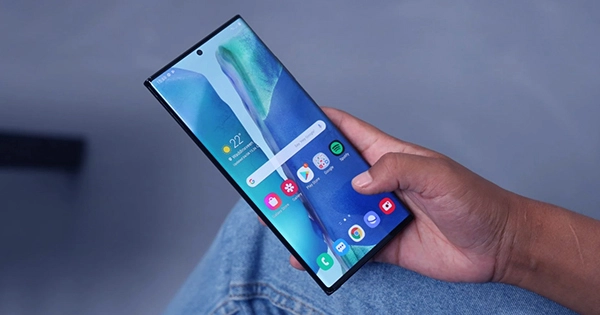The majority of individuals in the world carry an Android phone. Android’s global smartphone market share is 71.3% this month, up from 71.1% in the same month last year, according to Statcounter. Additionally, there are 2.8 billion active Android users worldwide despite the fact that more than one billion Android phones were released last year. 7.4% of those phones, according to a study from SportsLens.com, are Samsung Galaxy devices. This month, Samsung is in the top place with 34.6% of the global Android market.
The fact that the Galaxy brand is the most well-known line of Android phones worldwide definitely doesn’t come as a surprise. After all, Samsung consistently ships the most smartphones year. One of the likely causes of LG’s exit from the market was Samsung’s dominance of the Android market. What concerning HTC? Let’s simply say that the company’s issues were a result of decisions it made for itself and Samsung’s success.

According to AppBrain data, Samsung had 34.6% of the global Android market this month. Oppo comes in second with 10.3% of the market, followed by Xiaomi with a respectable 14.3%. The top five is completed by Huawei (6.7%) and Vivo (9.8%). As recently as 2019, Huawei was the second-largest smartphone manufacturer in the world, trailing only Samsung’s 21.8% market share.
However, the U.S. made life tough for the company in 2019 and 2020 by banning it from accessing materials from its American supply chain and by forbidding it from obtaining chips built by foundries utilizing American technology. In the end, the business sold off its Honor division, created its own HarmonyOS to replace the Android operating system provided by Google Mobile Services, and is now employing Snapdragon 8+ Gen 1 CPUs that are only compatible with 4G LTE.
What then is the most often used Android device globally for the first six weeks of this month? That would be the mid-range Samsung Galaxy A12, which as of this month had a 2.1% share of the Android market. The Galaxy A10s and Samsung A21s both have 1% market shares in relation to that model. All of these phones come from the mid-range Galaxy A line, which features powerful cameras, huge screens, and powerful batteries.
For instance, the Galaxy A12 has a 6.5-inch LCD screen with a 720 x 1600 HD+ resolution. It has a 12nm MediaTek Helio P35 processor, 4GB of memory, and 64GB of storage (48.2GB available to the user). On the back, there is a quad-camera arrangement with a primary 48MP camera (f/2.0), a 5MP ultra-wide camera, a 2MP Macro camera for close-ups, and a 2MP depth sensor. There is a 1TB capacity microSD card for extra storage. A front-facing 8MP camera is available for selfies and video calls.
The previous five years have seen a trend that favors iOS over Android: It is also not surprising that the Galaxy A12 has a 5000mAh battery that can be charged at a maximum rate of 15W given that it is a Galaxy A gadget. The battery life on this gadget ought to be fantastic given the HD+ resolution of the display.
When it comes to the market for foldable phones, Samsung is the market leader. The Galaxy Z Flip 3 was the most popular smartphone in its category last year. The business unveiled the Galaxy Z Fold 4 and Galaxy Z Flip 4 earlier this year. The Galaxy Z Fold 4 expands to expose a 7.6-inch tablet-sized display (a clamshell that flips open to produce a 6.7-inch display).
It should be noted that while Android has a market share of roughly 71% globally, it holds 85% of the market in nations like Brazil, India, Indonesia, Turkey, and Vietnam. Regarding iOS, its annual growth rate is stagnant at roughly 28% of the global market. But the long-term trend appears to be in Apple’s advantage. While iOS has witnessed growth of 8 percentage points over the same period, Android has suffered a decline of 1.8 percentage points in its market share globally.















